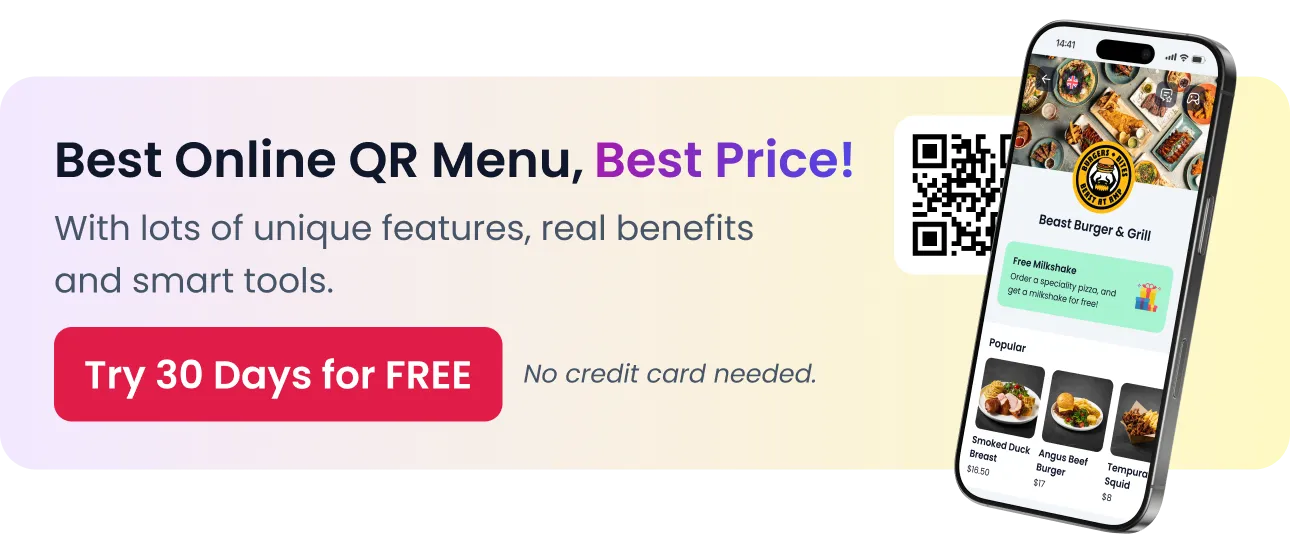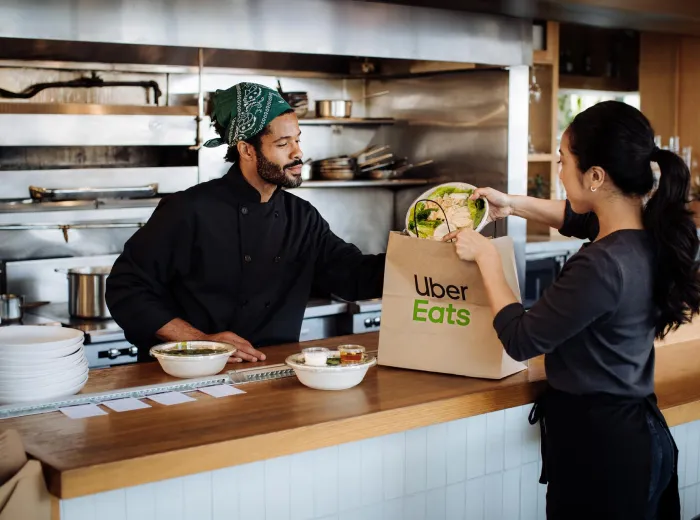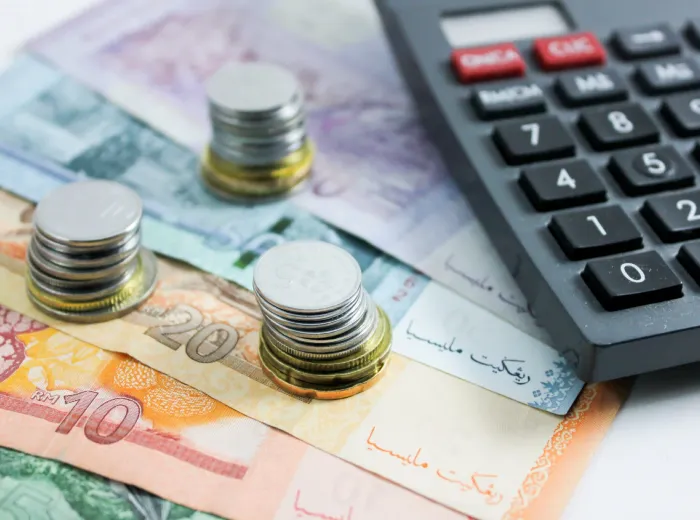
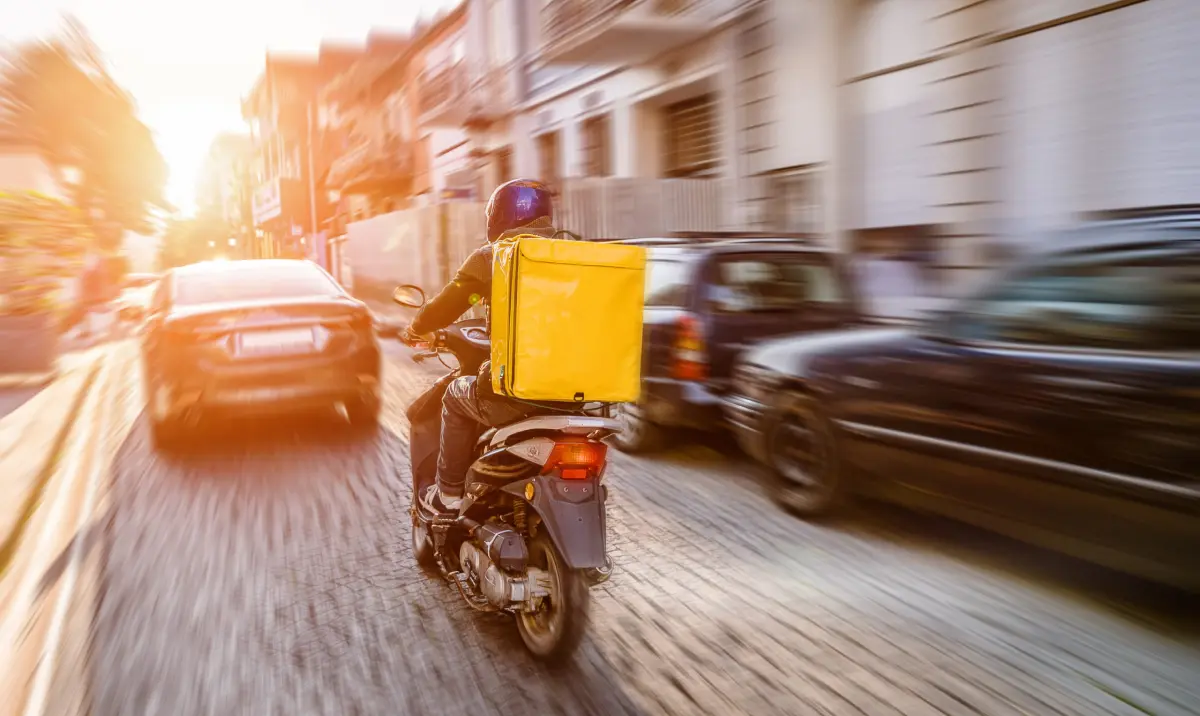
How to Improve Your Restaurant’s Food Delivery Time?
In the fast-paced world of food delivery, speed is just as crucial as quality. Customers expect their meals to arrive hot, fresh, and on time—any delay can lead to dissatisfaction, negative reviews, and lost business. With food delivery becoming a significant revenue stream for restaurants, optimizing your delivery time is no longer optional; it’s a necessity.
Long wait times don’t just frustrate customers—they can also impact your bottom line. A slow delivery process means fewer orders fulfilled per hour, increased operational costs, and potential loss of repeat business. Whether you’re using third-party services like Uber Eats and DoorDash or managing an in-house fleet, improving your restaurant’s food delivery time can enhance customer loyalty, boost efficiency, and give you a competitive edge.
In this guide, we’ll explore proven strategies to speed up your food delivery process. From optimizing kitchen workflows to leveraging technology and improving delivery logistics, every step matters. By implementing these tactics, you can ensure faster, more reliable service while maintaining food quality and customer satisfaction.
Why Fast Food Delivery Matters for Your Restaurant
Speed is a key factor in food delivery. Customers today expect their orders to arrive quickly and in perfect condition. A slow delivery process can lead to frustration, negative reviews, and lost sales. On the other hand, fast and efficient delivery can enhance your restaurant’s reputation, increase customer retention, and improve operational efficiency.
By understanding the impact of delivery time, you can make informed decisions to optimize your restaurant’s processes and stay ahead of the competition. Let’s explore why delivery speed is crucial and how it affects different aspects of your business.
Customer Expectations in the Digital Age
Modern customers are used to instant gratification, thanks to services like Amazon Prime and on-demand streaming. When it comes to food delivery, they expect the same level of speed and reliability.
- The impact of slow delivery:
- 60% of customers say they are less likely to order again after a late delivery.
- Negative reviews often mention long wait times as a major complaint.
- Social media can amplify bad experiences, damaging your reputation.
- The demand for faster service:
- Many customers check estimated delivery times before placing an order.
- Restaurants that consistently meet delivery time expectations earn repeat business.
- Quick service increases the chances of positive online reviews and recommendations.
Meeting these expectations is essential for staying competitive in the food delivery market. If your restaurant delivers food faster than the competition, you have a better chance of retaining customers and increasing loyalty.
The Competitive Advantage of Fast Delivery
Speed isn’t just about customer satisfaction—it’s also a powerful differentiator in a crowded market. Restaurants that can consistently deliver food quickly gain a competitive edge.
- How fast delivery improves brand reputation:
- Customers associate quick service with professionalism and reliability.
- Positive word-of-mouth marketing leads to organic growth.
- Faster delivery builds trust and encourages repeat orders.
- Why customers choose speed over price:
- Many customers prioritize speed over small price differences.
- Studies show that diners are willing to pay extra for guaranteed fast delivery.
- Restaurants with fast delivery often outperform slower competitors, even with higher prices.
By optimizing delivery times, your restaurant can attract more customers, encourage repeat business, and stand out in a competitive industry.
Metrics to Track for Food Delivery Performance
Tracking key performance indicators (KPIs) helps you measure and improve your delivery efficiency. By analyzing data, you can identify bottlenecks and make adjustments to optimize speed.
- Essential delivery metrics:
- Average order preparation time: Measures how long it takes to prepare food before it leaves the kitchen.
- Delivery transit time: Tracks how long it takes for the food to reach the customer after leaving the restaurant.
- Order accuracy rate: Ensures that customers receive the correct items, reducing delays caused by redeliveries.
- Customer satisfaction scores: Reviews and feedback provide insights into whether your delivery speed meets expectations.
- How to use these metrics:
- Identify areas where delays occur (e.g., kitchen prep, driver wait time, inefficient routes).
- Set benchmarks and goals for improvement.
- Use real-time tracking to monitor delivery performance and make quick adjustments.
By keeping a close eye on these metrics, your restaurant can continuously refine its delivery process, reduce delays, and maintain high customer satisfaction levels.
Optimizing Your Kitchen Workflow for Faster Order Prep
The speed of your food delivery starts in the kitchen. A well-structured and efficient kitchen workflow ensures that orders are prepared quickly and correctly. Any bottlenecks in food preparation can cause significant delays, increasing wait times and frustrating customers.
By streamlining kitchen operations, investing in the right equipment, and eliminating inefficiencies, your restaurant can significantly improve order preparation time. Below are key strategies to optimize your kitchen workflow for faster order fulfillment.
Streamlining Food Preparation Steps
Reducing the time it takes to prepare food starts with organization. Every second counts in a busy kitchen, and small adjustments can make a big difference in efficiency.
- Pre-portion and pre-prep ingredients:
- Cut, chop, and measure ingredients in advance to reduce prep time during service hours.
- Use vacuum-sealed portions for proteins and sauces to maintain freshness.
- Train kitchen staff on batch processing techniques to save time.
- Optimize ingredient storage and accessibility:
- Arrange ingredients based on usage frequency—most commonly used items should be within easy reach.
- Implement color-coded or labeled storage bins for quick identification.
- Keep sauces, condiments, and garnishes at a dedicated finishing station to speed up plating.
- Use standardized recipes and procedures:
- Create a clear step-by-step guide for preparing each menu item.
- Ensure staff follow portioning guidelines to maintain consistency and speed.
- Reduce unnecessary steps in food assembly to enhance efficiency.
A streamlined preparation process reduces the chances of delays and ensures that orders move through the kitchen quickly and smoothly.
Reducing Bottlenecks in the Kitchen
Bottlenecks occur when one section of the kitchen slows down the entire operation. Identifying and fixing these weak points is essential for improving delivery speed.
- Common bottlenecks and their solutions:
- Overcrowded workstations: Ensure each staff member has enough space to work efficiently.
- Unbalanced staffing: Assign the right number of cooks per station to match demand.
- Poor communication: Use a Kitchen Display System (KDS) to ensure seamless order flow.
- Waiting on specific ingredients: Keep backup supplies ready to avoid running out mid-service.
- Improving kitchen workflow efficiency:
- Implement a station-based setup where each team member focuses on specific tasks (e.g., grilling, frying, plating).
- Use timers to ensure food is prepared in the correct sequence for multi-item orders.
- Schedule regular kitchen audits to identify inefficiencies and make improvements.
Reducing bottlenecks leads to a smoother, faster kitchen operation, allowing food to be prepared and sent out without unnecessary delays.
Investing in the Right Kitchen Equipment
The right tools can make a major impact on kitchen efficiency. Outdated or slow equipment can slow down preparation, while modern, high-speed alternatives can significantly speed up order fulfillment.
- Essential equipment upgrades:
- High-speed ovens: Reduce cooking times without sacrificing quality.
- Automatic fryers: Ensure consistent frying while freeing up staff for other tasks.
- Vacuum sealers: Extend ingredient shelf life and improve portion control.
- Induction cooktops: Provide rapid heating for quicker cooking times.
- The role of packaging stations in speeding up order dispatch:
- Designate a separate area for assembling and packing takeout orders.
- Use thermal bags and heat lamps to keep food warm before pickup.
- Implement a final quality control check to ensure accuracy before sealing the order.
By investing in efficient kitchen equipment and optimizing food packaging stations, your restaurant can cut down preparation time and ensure that delivery orders are ready for pickup as soon as possible.
Improving your kitchen workflow is one of the most effective ways to enhance food delivery speed. By streamlining prep work, addressing bottlenecks, and upgrading equipment, your restaurant can operate at peak efficiency—ensuring that every order is fresh, fast, and accurate.
Enhancing Your Order Management System
A well-structured order management system is crucial for reducing delivery delays and ensuring smooth operations. When orders pile up or get mixed up, kitchen efficiency drops, leading to longer wait times and frustrated customers. By integrating smart technology, setting realistic preparation time estimates, and managing peak hours effectively, your restaurant can significantly improve delivery speed and accuracy.
The Role of POS and Order Integration
A modern point-of-sale (POS) system can streamline order processing by integrating with delivery platforms and kitchen management tools. Instead of manually handling orders from multiple sources, automation ensures that everything flows smoothly.
- Benefits of a fully integrated order system:
- Automatically syncs online, in-house, and phone orders to reduce confusion.
- Sends orders directly to the kitchen display system (KDS), eliminating the need for handwritten tickets.
- Reduces human errors in order processing.
- Key integrations to improve efficiency:
- Third-party delivery apps (Uber Eats, DoorDash, Talabat, etc.) – Streamline orders from multiple platforms.
- Kitchen display systems (KDS) – Speed up order processing with clear, digital order tracking.
- Automated ticketing systems – Prioritize and categorize orders for efficient handling.
An integrated system ensures that no order is lost, delayed, or duplicated—helping you maintain a fast and efficient workflow.
Setting Realistic Preparation Time Estimates
Customers expect accurate delivery times, and misleading estimates can lead to frustration. Setting realistic preparation times improves customer trust and allows for better kitchen scheduling.
- How to calculate accurate prep times:
- Analyze historical data to determine the average time needed to prepare each dish.
- Factor in order volume, kitchen workload, and staff availability.
- Use AI-powered systems to adjust estimates based on real-time conditions.
- Dynamic order timing strategies:
- Increase preparation estimates during peak hours to prevent over-promising.
- Update estimated wait times automatically based on kitchen congestion.
- Notify customers immediately if delays occur to manage expectations.
By setting realistic and transparent preparation times, your restaurant can improve delivery accuracy and keep customers satisfied.
Handling Peak Hours Efficiently
During busy hours, a disorganized kitchen can slow down delivery times. Proactively managing rush periods can prevent delays and ensure a steady flow of orders.
- Strategies for peak-hour efficiency:
- Pre-prep ingredients for high-demand items before rush hours begin.
- Assign a dedicated team for delivery and takeout orders to avoid disrupting dine-in service.
- Use batch processing for similar orders to reduce cooking and assembly time.
- Limit menu items during high-demand periods to focus on faster-selling dishes.
- Technology solutions for peak-hour management:
- AI-powered order pacing systems that regulate the flow of incoming orders.
- Load balancing to distribute orders evenly across different kitchen stations.
- Automated notifications to inform customers about adjusted delivery times.
By preparing in advance and leveraging automation, your restaurant can handle peak-hour demand smoothly—ensuring faster deliveries without compromising quality.
A well-optimized order management system can significantly improve delivery speed and accuracy. By integrating POS technology, setting realistic prep times, and managing peak-hour demand, you can create a seamless, high-speed ordering process that keeps customers happy and loyal.
Optimizing Your Delivery Logistics for Speed
Even if your kitchen and order management are efficient, poor delivery logistics can still slow down your service. A well-structured delivery system ensures that food reaches customers as quickly as possible while maintaining quality. Whether you rely on third-party apps or manage in-house drivers, optimizing your logistics is key to faster deliveries and better customer satisfaction.
Choosing the Best Delivery Method
Your choice of delivery model can have a significant impact on speed, cost, and control over customer experience. Understanding the pros and cons of different methods will help you choose the best approach for your restaurant.
- Third-party delivery services (Uber Eats, DoorDash, Talabat, etc.)
- Pros: Wider customer reach, no need to hire and train drivers, reduced overhead costs.
- Cons: Higher commission fees, limited control over driver availability and speed.
- Best for: Restaurants that want to expand their delivery options without in-house staff.
- In-house delivery fleet
- Pros: Full control over delivery quality and timing, lower commission costs over time.
- Cons: Higher initial costs (hiring, training, vehicle maintenance), logistics management required.
- Best for: Restaurants with a high volume of deliveries and a dedicated customer base.
- Hybrid model (mix of in-house and third-party services)
- Pros: Greater flexibility, ability to handle peak-hour demand with third-party drivers.
- Cons: Requires careful coordination to prevent delays and inefficiencies.
- Best for: Restaurants looking to optimize costs while maintaining quality control.
Choosing the right delivery method depends on your restaurant’s budget, demand, and operational capacity. A hybrid approach is often the most efficient, allowing for scalability during peak times.
Strategic Route Planning
A well-planned route can reduce delivery times and increase order volume per shift. Inefficient routes lead to longer trips, late deliveries, and wasted fuel.
- How to improve route efficiency:
- Use GPS tracking and route optimization software to find the fastest paths.
- Plan deliveries in clusters to minimize travel time per trip.
- Avoid high-traffic zones and road construction areas by using real-time traffic updates.
- Tools for route optimization:
- Google Maps & Waze – Free tools for traffic updates and navigation.
- Circuit for Teams & Routific – Route planning software for multiple deliveries.
- AI-powered delivery management systems – Automatically assign deliveries based on driver location and availability.
By optimizing delivery routes, restaurants can reduce fuel costs, increase the number of orders completed per hour, and improve customer satisfaction.
Training Delivery Staff for Efficiency
Even the best logistics system will fail if delivery staff are not trained properly. Whether using in-house drivers or third-party couriers, clear guidelines can speed up delivery and improve service quality.
- Best practices for faster deliveries:
- Ensure drivers understand the delivery zones to avoid navigation delays.
- Train staff on efficient pick-up and drop-off procedures (e.g., using insulated bags for quick handovers).
- Encourage drivers to verify orders before leaving to prevent returns and redeliveries.
- How to reduce failed deliveries and redeliveries:
- Confirm customer addresses and use automated SMS confirmations.
- Train drivers to contact customers if they have trouble finding the location.
- Implement photo proof of delivery for better tracking and dispute resolution.
A well-trained delivery team is key to fast and reliable service, reducing the chances of mistakes and delays that could frustrate customers.
Optimizing your delivery logistics is essential for faster, more efficient food delivery. By selecting the right delivery method, planning strategic routes, and ensuring that your drivers are well-trained, your restaurant can reduce delays, increase efficiency, and improve overall customer satisfaction.
Improving Food Packaging for Faster and Safer Delivery
Packaging plays a crucial role in food delivery speed and quality. Poor packaging can lead to spills, temperature loss, and customer dissatisfaction. The right packaging solutions ensure that food is delivered hot, fresh, and intact while also speeding up the packing and handoff process. By optimizing your packaging strategy, you can improve efficiency and enhance customer experience.
The Right Packaging for Quick Handling
The way food is packaged affects not only its presentation and freshness but also how quickly it can be assembled and transported. Choosing efficient, well-designed packaging can help speed up the entire delivery process.
- How packaging affects delivery speed:
- Lightweight materials reduce handling time and make stacking easier.
- Easy-to-close containers minimize packaging delays in the kitchen.
- Stackable designs help couriers carry multiple orders safely.
- Best packaging materials for food delivery:
- Thermal bags & insulated containers – Maintain food temperature.
- Tamper-proof seals – Provide security and build customer trust.
- Eco-friendly packaging – Lightweight, sustainable, and preferred by customers.
- Reducing packaging-related delays:
- Keep frequently used packaging near the assembly station for quick access.
- Train staff to pack orders efficiently to avoid confusion.
- Use color-coded packaging for different meal types (e.g., hot vs. cold items).
The right packaging allows for faster handling and ensures food arrives in excellent condition—reducing complaints and increasing repeat business.
Spill-Proof and Heat-Retentive Packaging
Nothing frustrates customers more than receiving cold or spilled food. Using spill-proof and temperature-controlled packaging prevents leaks and preserves freshness, leading to a better overall experience.
- How to keep food hot and fresh:
- Use double-insulated packaging for items that need to stay hot.
- Vent lids for fried foods to prevent sogginess.
- Separate hot and cold items to maintain optimal temperatures.
- Preventing spills and leaks:
- Secure lids with snap-tight seals or adhesive stickers.
- Use compartmentalized containers for dishes with sauces.
- Place drinks in cup holders with spill-proof lids.
By investing in high-quality, heat-retentive packaging, you can ensure that customers receive their food as fresh as if they were dining in.
Labeling and Order Accuracy
Mistakes in order fulfillment often occur when multiple items are packed together. Clear labeling can speed up order assembly, prevent mix-ups, and improve customer satisfaction.
- Best practices for food labeling:
- Use printed labels with the customer’s name and order number.
- Include special instructions (e.g., “No onions,” “Extra sauce”).
- Mark allergen-sensitive items to avoid health risks.
- How labeling improves efficiency:
- Drivers can quickly verify orders without opening packaging.
- Customers can easily identify their meals when ordering in groups.
- Reduces the likelihood of complaints due to incorrect orders.
By ensuring clear and accurate labeling, your restaurant can eliminate errors, reduce redeliveries, and increase efficiency in handling multiple orders.
Optimizing food packaging is just as important as fast preparation and delivery. By selecting the right materials, preventing spills, and using clear labels, your restaurant can speed up the fulfillment process and ensure top-quality food delivery—resulting in happier customers and fewer complaints.
Leveraging Technology to Speed Up Food Delivery
Technology plays a crucial role in optimizing food delivery operations. From AI-powered dispatching to real-time order tracking, the right tech tools can streamline processes, reduce delays, and improve customer satisfaction. By integrating smart solutions into your delivery system, you can increase efficiency, minimize errors, and enhance overall speed.
Real-Time Order Tracking for Customers
Customers today expect transparency. Real-time tracking keeps them informed about their orders, reducing anxiety and unnecessary inquiries.
- Benefits of real-time tracking:
- Reduces customer frustration by providing accurate ETAs.
- Decreases the number of calls asking, “Where is my order?”
- Builds trust and improves customer satisfaction.
- Best tools for order tracking:
- Live GPS tracking systems (Uber Eats, DoorDash, and custom restaurant apps).
- Automated SMS notifications updating customers at each stage (e.g., order confirmed, food being prepared, out for delivery).
- AI-based tracking that predicts delays and adjusts ETAs accordingly.
By offering real-time tracking, you provide a better experience while allowing your team to focus on faster order fulfillment.
AI and Automation in Delivery
Artificial intelligence (AI) is transforming food delivery by automating order dispatch, route planning, and kitchen operations. Restaurants using AI-powered systems can process orders faster and more efficiently.
- How AI speeds up food delivery:
- Automated dispatching assigns orders to the closest available driver for quicker pickup.
- Predictive cooking algorithms analyze order trends and suggest prepping popular items in advance.
- Smart traffic analysis suggests alternative routes to avoid congestion.
- Examples of AI-powered tools:
- DispatchTrack – AI-driven order assignment for faster deliveries.
- Kitchen Display Systems (KDS) – Reduces wait times by prioritizing orders dynamically.
- Google AI-based traffic predictions – Helps couriers avoid slow routes.
AI and automation ensure that every step of the delivery process is optimized, from order acceptance to food drop-off.
Using Data Analytics for Performance Improvements
Tracking key performance metrics helps restaurants identify inefficiencies and improve delivery speeds. Data-driven decisions ensure continuous optimization.
- Essential delivery metrics to track:
- Average order preparation time – Helps identify kitchen slowdowns.
- Driver wait time at the restaurant – Measures how long drivers are waiting for orders to be ready.
- Order accuracy rate – Tracks the percentage of correctly fulfilled orders to minimize redeliveries.
- Customer feedback & ratings – Identifies common complaints and areas for improvement.
- How to use data analytics for faster deliveries:
- Identify peak hours and adjust staffing accordingly.
- Analyze delivery routes to reduce delays and improve efficiency.
- Use customer feedback to optimize food packaging, temperature control, and delivery times.
By leveraging technology, AI, and data analytics, your restaurant can automate processes, improve speed, and maintain high customer satisfaction levels—giving you a strong competitive edge in the delivery market.
Customer Communication and Expectation Management
Effective customer communication is essential for a smooth food delivery experience. When customers know what to expect, they are less likely to become frustrated by delays. Clear, proactive communication reduces negative reviews, increases repeat orders, and builds trust in your brand. By setting realistic expectations and keeping customers informed, you can improve satisfaction and loyalty.
Setting Clear Delivery Time Expectations
Customers expect accurate and realistic ETAs for their orders. Misleading them with overly optimistic delivery times can result in disappointment and lost trust.
- How to set accurate delivery expectations:
- Use real-time tracking to update customers about their order status.
- Adjust estimated times dynamically based on kitchen workload and delivery demand.
- Offer tiered delivery options (e.g., express delivery for an additional fee).
- Best practices for delivery time transparency:
- Avoid underpromising or overpromising—be honest about delays.
- Send automatic updates via SMS or app notifications at different stages of delivery.
- Allow customers to track their orders live and see real-time adjustments.
When customers receive accurate ETAs, they are more likely to remain patient and satisfied with the service.
Offering Live Order Updates
Customers appreciate real-time updates about their order status, especially during longer wait times. Keeping them informed reduces complaints and enhances their overall experience.
- Methods to keep customers updated:
- SMS notifications – “Your order is being prepared,” “Your driver is on the way.”
- Push notifications via mobile apps – Instant updates for tech-savvy users.
- AI-powered chatbots – Automatically answer customer inquiries about order status.
- Why live updates improve customer satisfaction:
- Reduces uncertainty and frustration.
- Lowers the number of customer service calls and inquiries.
- Increases confidence in your brand’s professionalism and reliability.
Providing timely updates helps manage customer expectations and prevents negative feedback due to lack of communication.
Handling Late Deliveries and Complaints
No matter how optimized your system is, delays can still happen. How you handle these situations makes a big difference in customer retention.
- How to respond to late deliveries professionally:
- Apologize and acknowledge the issue before the customer complains.
- Offer a discount or free item for long delays to maintain goodwill.
- Train staff to handle complaints with empathy and problem-solving skills.
- Common customer complaints and solutions:
- Food arrived cold → Provide better thermal packaging or offer a refund.
- Order was incomplete → Offer a discount or immediate redelivery if possible.
- Long wait time → Clearly communicate delays and offer loyalty rewards.
By handling issues proactively and offering compensation when necessary, your restaurant can turn negative experiences into positive ones and retain loyal customers.
Proactive customer communication and expectation management are crucial for a successful food delivery service. By setting realistic delivery times, offering live updates, and handling complaints professionally, you can improve customer satisfaction and build a strong reputation for reliability and trustworthiness.
Key Takeaways for Speeding Up Your Restaurant’s Delivery
Optimizing your restaurant’s food delivery speed is a multifaceted process that involves kitchen efficiency, logistics, technology, and customer communication. By implementing the right strategies, you can reduce wait times, improve order accuracy, and enhance customer satisfaction. Below are the key takeaways to help you build a faster and more efficient delivery system.
Streamline Kitchen Operations for Faster Prep Times
- Pre-portion and pre-prep ingredients to reduce cooking time.
- Organize kitchen stations for a smooth workflow.
- Invest in high-speed cooking equipment to optimize efficiency.
Optimize Order Management to Prevent Delays
- Use a POS system integrated with delivery platforms to streamline order intake.
- Set realistic preparation time estimates based on real-time kitchen load.
- Manage peak hours by using batch processing and smart scheduling.
Improve Delivery Logistics for Speed and Accuracy
- Choose the right delivery model (in-house, third-party, or hybrid) to match your restaurant’s needs.
- Implement GPS tracking and route optimization to shorten transit times.
- Train drivers for efficient and accurate deliveries to minimize errors.
Upgrade Packaging to Maintain Food Quality
- Use spill-proof and heat-retentive packaging to preserve freshness.
- Label orders clearly to prevent mix-ups and ensure accuracy.
- Keep packaging stations organized and well-stocked for faster assembly.
Leverage Technology to Speed Up Operations
- Offer real-time tracking and order updates to customers.
- Use AI and automation for order dispatching and delivery scheduling.
- Analyze delivery data to identify bottlenecks and improve performance.
Communicate Effectively to Manage Customer Expectations
- Provide accurate ETAs and avoid overpromising delivery times.
- Send live order updates via SMS, push notifications, or email.
- Handle complaints proactively with apologies, discounts, or redelivery options.
Final Thought
Speeding up your restaurant’s delivery isn’t just about delivering food faster—it’s about delivering a seamless, high-quality experience. By optimizing every step of the process, from kitchen prep to last-mile delivery, you can increase efficiency, reduce complaints, and build a loyal customer base that keeps coming back. 🚀
Boost Your Delivery Game: Frequently Asked Questions
Discover quick, SEO-optimized answers to common questions about speeding up restaurant delivery times. These insights help your readers find the solutions they need—fast.
How can a delivery-only menu improve delivery speed?
A delivery‑only menu typically features dishes that are quicker to prepare, easier to package, and remain fresh longer in transit. By narrowing down options to high-margin, delivery‑friendly items, kitchens reduce preparation complexity and streamline execution—leading to faster, more reliable deliveries.
What role does route optimization software play in faster deliveries?
Route optimization tools analyze real‑time traffic, driver availability, and geographic data to create efficient delivery paths. By automatically planning and adjusting routes, these tools reduce delays, lower fuel and labor costs, and ensure timely arrivals.
Should I adjust delivery time estimates during peak hours?
Yes. Adding a 5–10 minute buffer to delivery estimates during busy periods—like lunch or dinner rush—helps manage customer expectations and protects your kitchen from overload. Consistently realistic timelines also maintain customer trust and satisfaction.
How does setting up a dedicated pickup area speed up delivery?
A separate pickup zone for delivery drivers reduces congestion in front-of-house areas and speeds up handoffs. Drivers get orders faster, keeping food fresher, and customer-facing lines stay clear—creating a smoother experience overall.
Why is digitizing delivery workflows essential for efficiency?
Automating delivery orders—via apps or integrated POS systems—eliminates manual tracking, reduces errors, and simplifies order logging. It frees up staff time, increases capacity, and supports accurate order management from placement to dispatch.
ABOUT THE AUTHOR
Erkin Coban
Your Customers Deserve The Best
And we got Menuviel for them.
The fastest and easy-to-use online QR menu with 12+ unique features. Choose Menuviel and elevate your service quality to the next level.
Use free for the first 30 days.
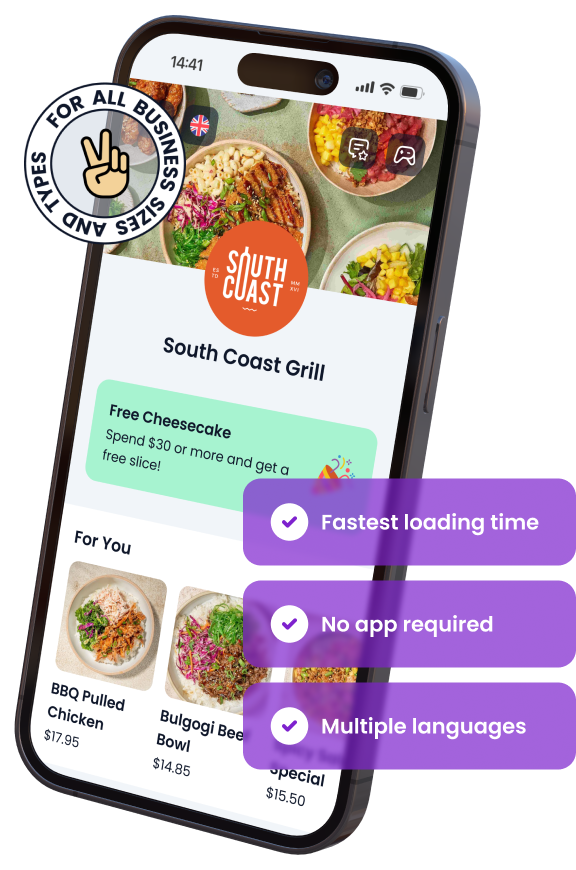
In This Article

Free AI Tools for Restaurants
TRY NOW ➜

Add your food delivery app links
Make it easy for customers to find your restaurant by adding direct links to popular food delivery apps.


